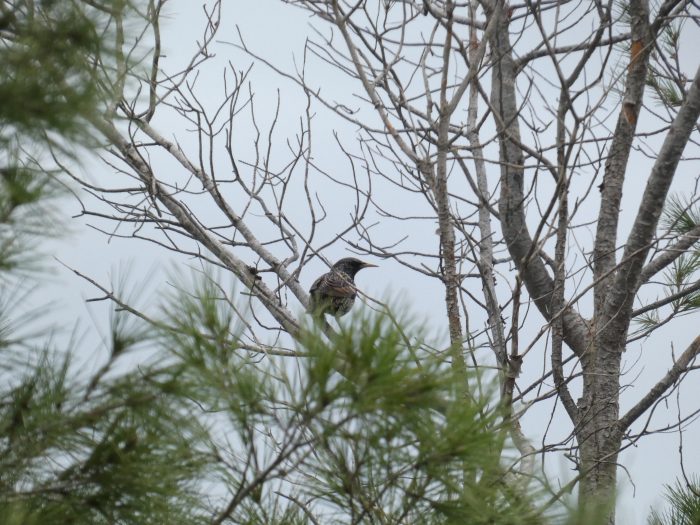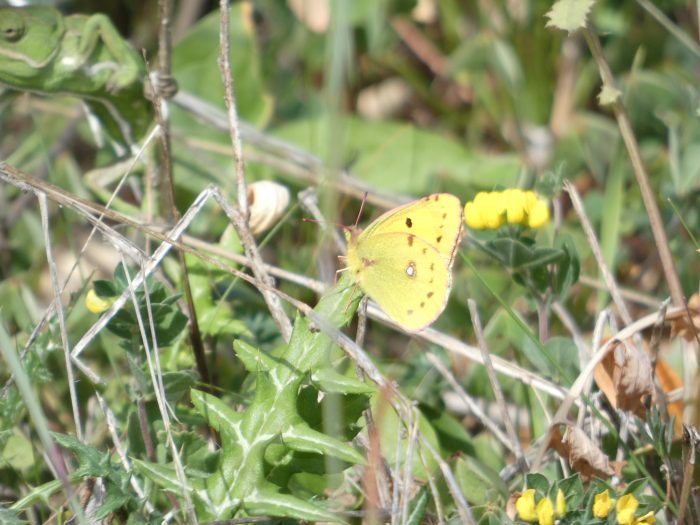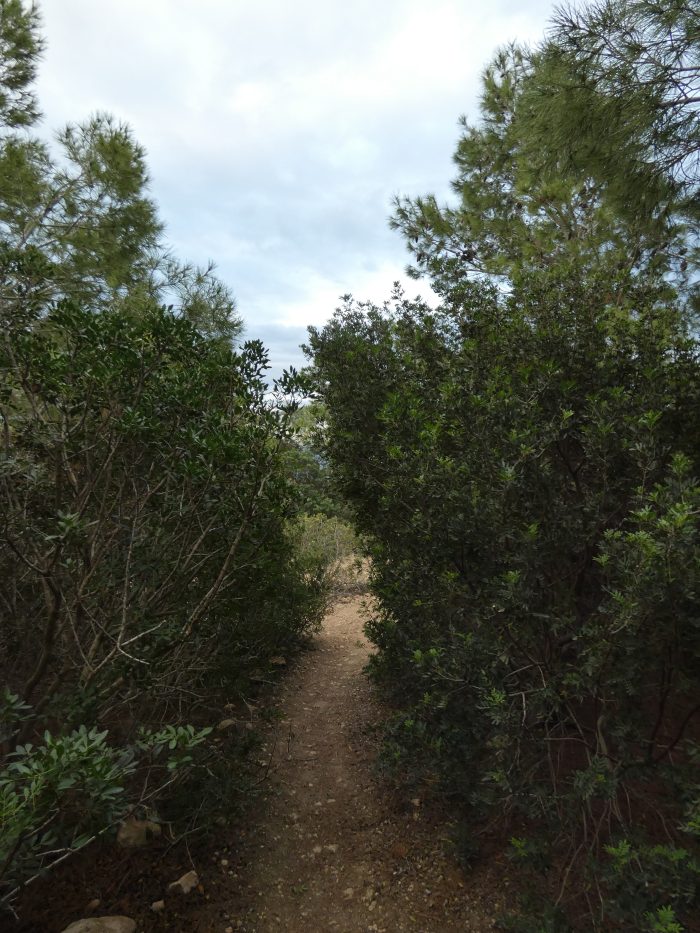On the frontlines is our monthly newsletter section covering the activities of BirdLife Malta’s conservation, policy and nature reserve (Salina, Simar, Għadira and Foresta 2000) teams, together with an update about rare and scarce bird species observed.

Citizen Science in action: Counting White Wagtails in Valletta
Every winter, Valletta’s skies come alive with the elegant flight of White Wagtails, drawn to the warmth and safety of Malta’s capital. On 11 January 2025, BirdLife Malta held its annual White Wagtail roost count, bringing together over 25 volunteers of all ages. From experienced birdwatchers to curious newcomers, this cherished tradition, which began in 1985, continues to unite people in the cause of conservation.
This year, an impressive 14,780 wagtails were recorded – a remarkable reflection of the volunteers’ dedication and the importance of this iconic roost. By keeping a watchful eye on Malta’s natural treasures, these individuals are not only protecting wildlife but also inspiring future generations to value and safeguard nature.
Hunting within 200m – Hunter admitted
During Spring Watch 2024, our camp teams recorded footage of a man targeting turtle doves from a hunting hide located too close to a residential building (within 200 meters). As a result, the incident was reported to the EPU. On Friday, 17 January, the magistrate fined the hunter following his admission of guilt.
End of hunting season
As of the 31st of January, the autumn hunting season has ended. Should you see any hunters after this date, the matter should be referred directly to the EPU (Environmental Protection Unit) of the Malta Police Force on 119. You can also report the matter to us on Facebook messenger or by email at [email protected].
Releases
At the beginning of January, we celebrated a positive start to the year at Għadira Nature Reserve with the release of a Robin and a Collared-dove back into the wild. Robin had narrowly escaped harm after being caught by a cat, while the Dove was rescued after colliding with a window during a storm with strong winds. We can certainly say we began the year by releasing two very lucky birds. In fact, these types of accidents—often underestimated—are among the leading causes of death for birds worldwide. We hope that these two releases symbolises good fortune for the birds that will be rehabilitated and released in the future.

Salina Nature Reserve
Sightings
The new year at Salina Nature Reserve welcomed an array of well-known wintering gulls, including the Black-headed Gull and Yellow-legged Gull, alongside Common Sandpipers and Kingfishers. Adding to the seasonal bird diversity, occasional visitors such as the Dunlin, Little Stint, and Black-necked Grebe made brief but exciting appearances. A particularly notable sighting was a flock of up to 10 Shelducks, which chose Salina as their wintering ground, further highlighting the reserve’s importance for migratory birds.
Among the reserve’s winter visitors, a Pied Avocet drew special attention due to visible injuries upon arrival. Fortunately, it made a full recovery and has remained at Salina Nature Reserve, offering excellent viewing opportunities for birdwatchers and nature enthusiasts. Unexpectedly long stays like this demonstrate the ecological health of the Salina saltpans, providing a well-balanced habitat and an abundant food supply.
These sightings reinforce the critical role of Salina’s wetland ecosystem in supporting both resident and migratory bird species, underlining its significance as a key site for bird conservation in Malta.
Works
The land management team at Salina Nature Reserve continues to build on last year’s success in attracting organised group visits, recently hosting a special event for children with learning disabilities. In collaboration with BirdLife Malta’s education team, the primary organisers of the event, Salina’s staff welcomed an enthusiastic group of young nature lovers and their caregivers. The workshops were designed to encourage interaction with nature, stimulate the senses, and enhance sensory skills.
During the event, children explored the reserve through guided tours, discovering the unique flora and diverse bird species that call Salina home. The overwhelmingly positive feedback from parents, caregivers, and—most importantly—the children themselves highlighted the event’s success in fostering a deeper connection with nature.
Following January’s heavy rainfall, the land management team has been hard at work refurbishing the birdwatching hides overlooking the saltpans. Additionally, the newly opened photography hide has already become a key feature at Salina Nature Reserve, providing visitors with a unique opportunity to observe birdlife up close.
Alongside these conservation efforts, behind-the-scenes preparations for Salina’s annual salt harvest are well underway. The team has ensured that all water pumps are fully operational, and essential maintenance has been completed to support a successful harvest. These ongoing site improvements come just in time for the spring migration, when an increase in bird activity and visitor numbers is expected.
By enhancing accessibility, improving visitor facilities, and maintaining the reserve’s ecological integrity, BirdLife Malta continues to make Salina Nature Reserve a premier destination for birdwatching, nature photography, and environmental education in Malta.
Għadira Nature Reserve
Sightings
Għadira Nature Reserve saw an exciting variety of wintering bird species throughout January. Frequent sightings included Shelducks, Black-necked Grebes, Little Grebes, Kingfishers, and Common Sandpipers. However, Moorhen numbers saw a noticeable decline compared to previous months.
Among the common passerines recorded daily were Black Redstarts, Meadow Pipits, and White Wagtails, adding to the lively bird activity at the reserve. A particularly noteworthy observation was the presence of two ringed Water Pipits, as well as several Reed Buntings that remained throughout the winter.
Works
Throughout January, conservation efforts at Għadira Nature Reserve focused on essential habitat management tasks, including pruning Tamarix trees, hedge trimming along the public pathway, and shredding pruned material to maintain the reserve’s ecosystem.
Supporting these efforts, two BSc Environmental Engineering students, Ewan and Michael, joined the reserves team for their work placement, assisting in a variety of ongoing conservation activities. Their contributions include planting cuttings in the nursery, pruning and shredding vegetation, removing invasive plant species such as African Box-thorn, and raking shredded material along the paths to improve site accessibility.
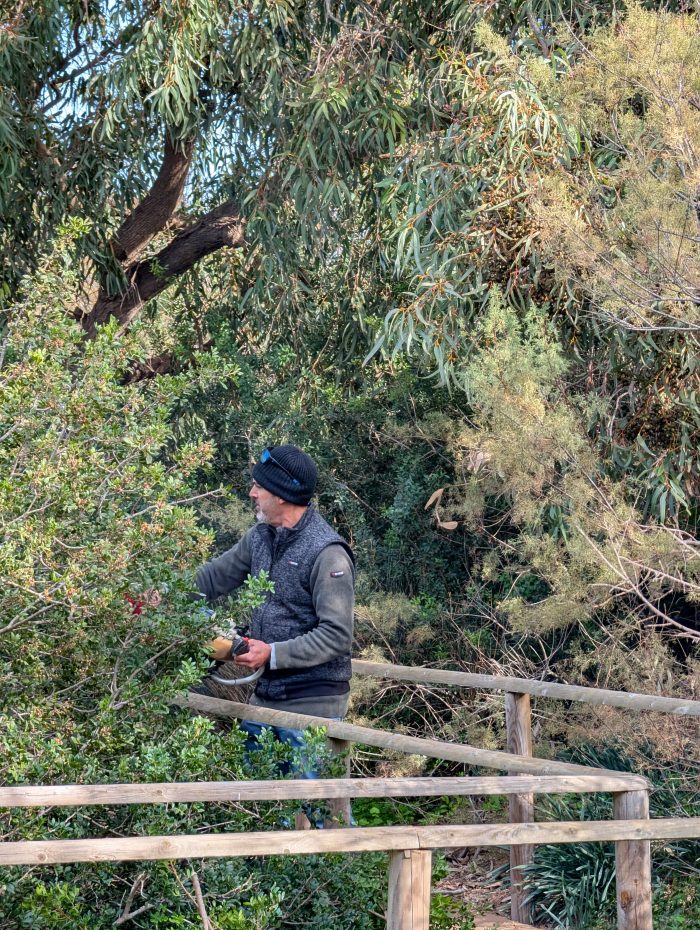
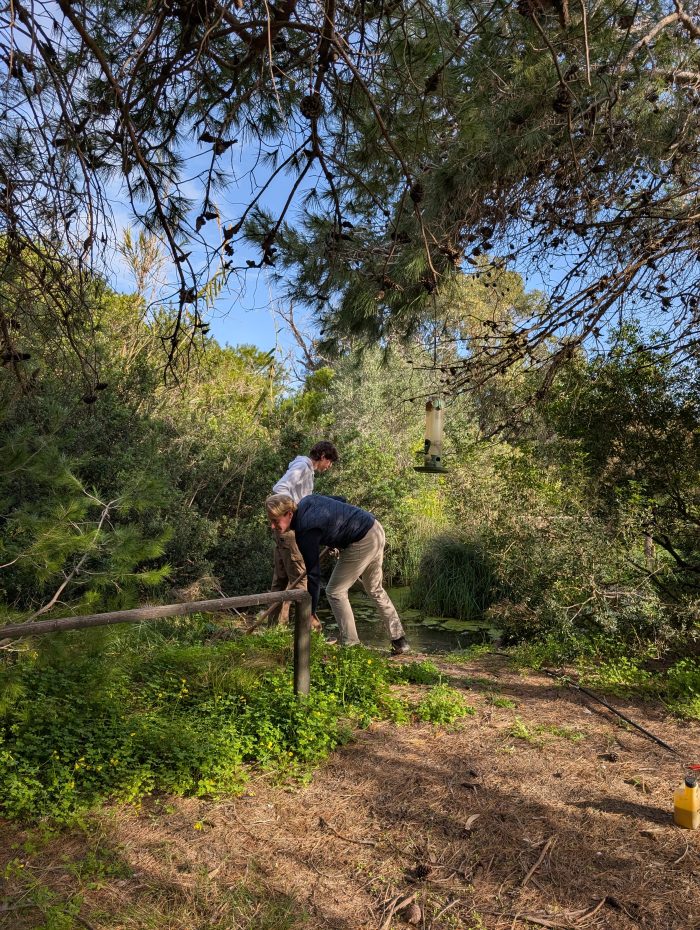
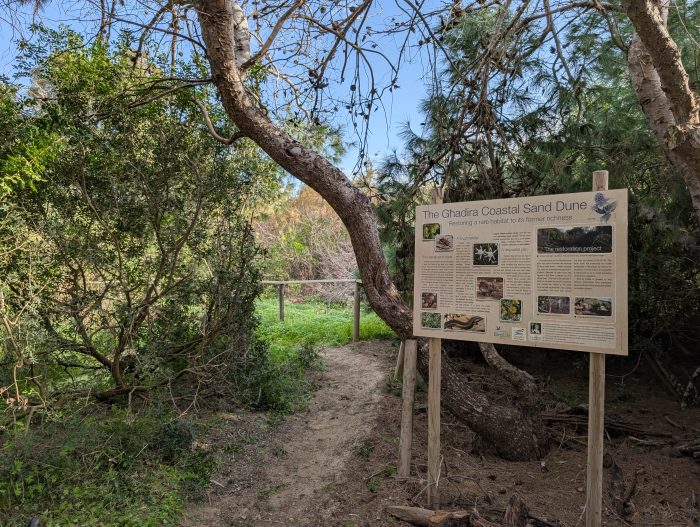
Simar Nature Reserve
Sightings
Although winter is still in full swing, the first signs of spring are already appearing at Simar Nature Reserve. Tamarisk trees have begun sprouting new leaves, while Common Reeds are sending out fresh shoots. Many annual plants are now flowering, attracting various insects. The first butterflies of the season, including Red Admirals and Large Whites, have been spotted, while a Vagrant Dragonfly has also made an appearance.
Bird activity is increasing, with resident species beginning to sing and display breeding behaviours. Little Grebes are now in full breeding plumage, engaging in courtship displays, often accompanied by their characteristic long tittering trills. Among the numerous Common Coots present, some have started establishing breeding territories, while Mallards are displaying mating rituals. Sardinian Warblers and Zitting Cisticolas are now in full song, while even wintering species like the Common Chiffchaff, Blackcap, and Robin are singing more frequently.
Among the frequent visitors, Great Cormorants have been seen feeding on fish and the occasional eel, with numbers reaching a record five individuals at a time. Grey Herons remain a constant presence, while up to 55 Little Egrets have been observed seeking shelter on windy days. Common Kingfishers are still present, with new arrivals joining the reserve. A new Black-necked Grebe has appeared alongside the two already present, while Black-headed Gulls can often be seen flying overhead and gathering in large numbers.
With bird activity increasing and wildlife awakening, Simar Nature Reserve is preparing for the transition into spring, reinforcing its role as a vital wetland habitat for both resident and migratory bird species in Malta.
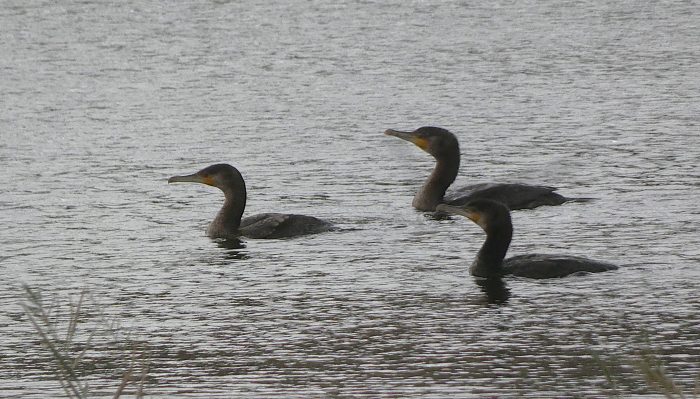
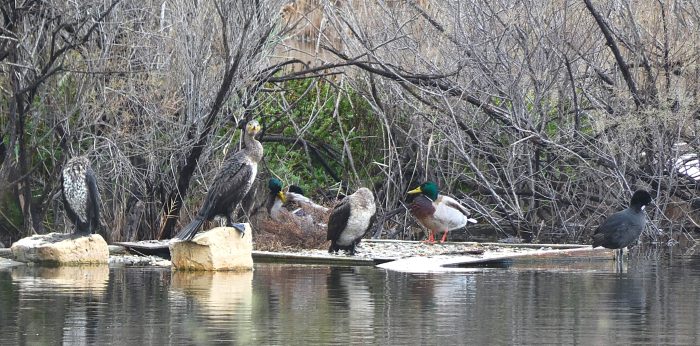
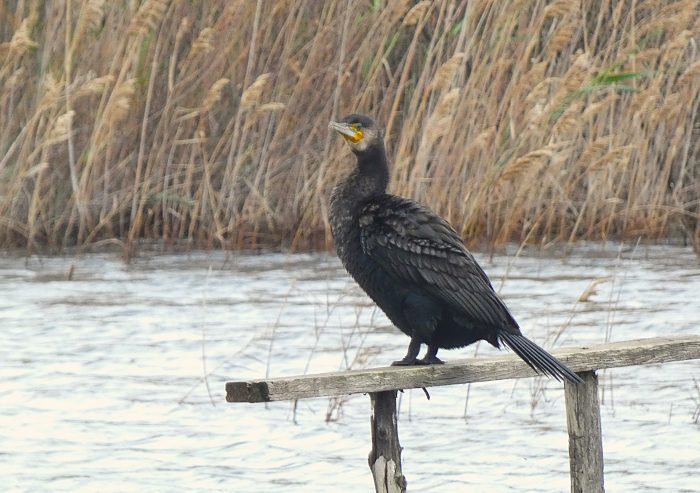
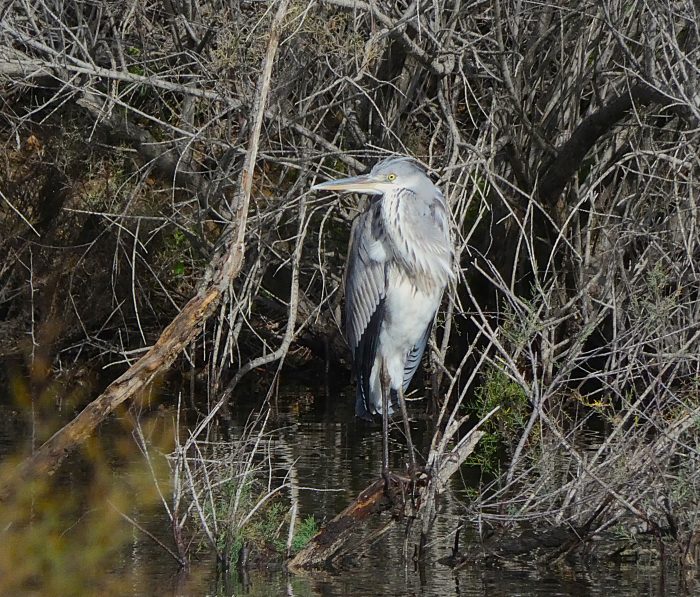
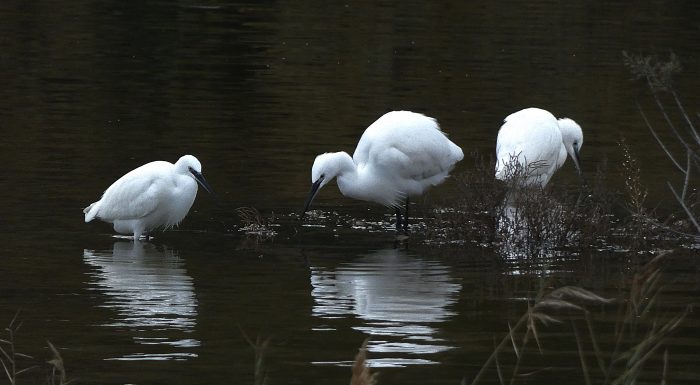
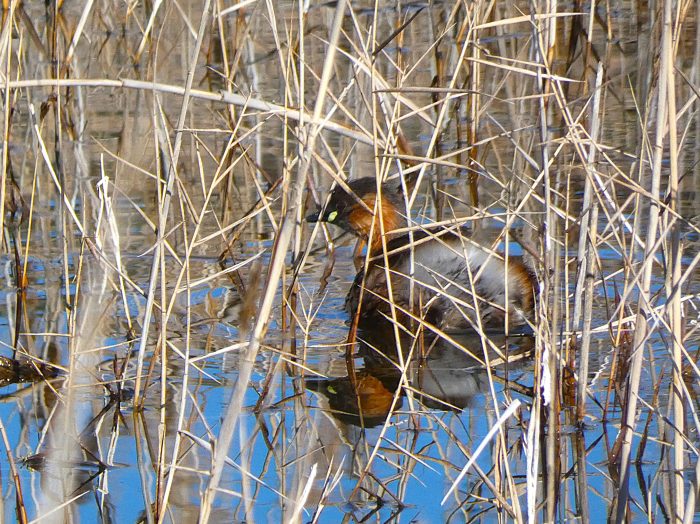
Works
Vegetation along the main nature path at Simar Nature Reserve was carefully cut back in certain areas to improve mobility and enhance visitor safety, while also allowing various native plants to thrive. Invasive, non-native plants were uprooted from the woodland to prevent further spread and protect the local ecosystem. Additionally, Eucalyptus trees around the visitor centre area were pruned and trimmed to reduce excess foliage and leaf litter, ensuring a cleaner and safer environment for visitors.
These habitat management efforts are also part of a broader strategy aimed at improving and enhancing the natural habitat of the reserve, ensuring that Simar Nature Reserve continues to provide a safe haven for both local wildlife and migratory species.
Foresta 2000
Sightings
January brought vibrant life and colour to Foresta 2000, with the reserve buzzing with activity and a wide variety of blooms. Birdwatchers were treated to sightings of Common Kestrels soaring and hovering overhead. Some of the most exciting observations included the tiny Firecrests and Goldcrests, which were spotted hiding among the trees. Sardinian Warblers and Blackcaps were particularly active, filling the crisp winter air with their melodic songs. Zitting Cisticolas, year-round residents, were already calling and darting above the steppe, while Stonechats, Starlings, and Robins felt right at home as winter visitors. Although Black Redstarts were less frequent compared to December, their occasional presence was still a delightful sight.
The butterfly population was led by the abundant Clouded Yellow, fluttering across the reserve. The landscape itself was bursting with colour, as Yellow Rock Rose, Olive-leaved Germander, and Scarlet Pimpernel came into bloom, along with Sulla and French Daffodil. In the water-filled rock pools, the delicate Fan-leaved Water-crowfoot (Ranunculus circinatus) provided a serene aquatic display. Among the insects, there was an exciting sighting of the rarely spotted Tropinota squalida, a beetle species that caught the attention of visitors.
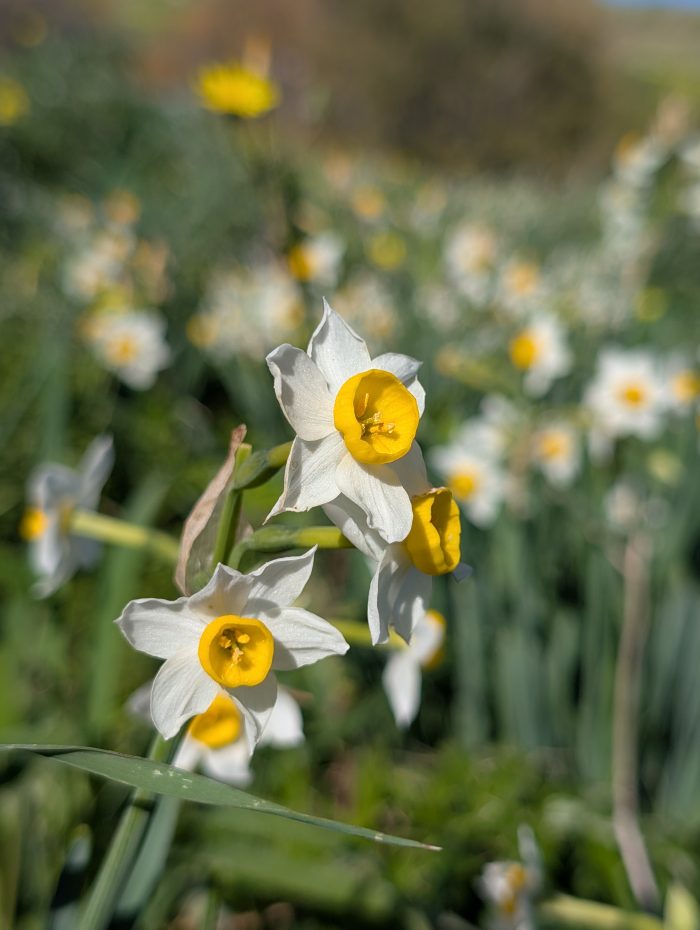
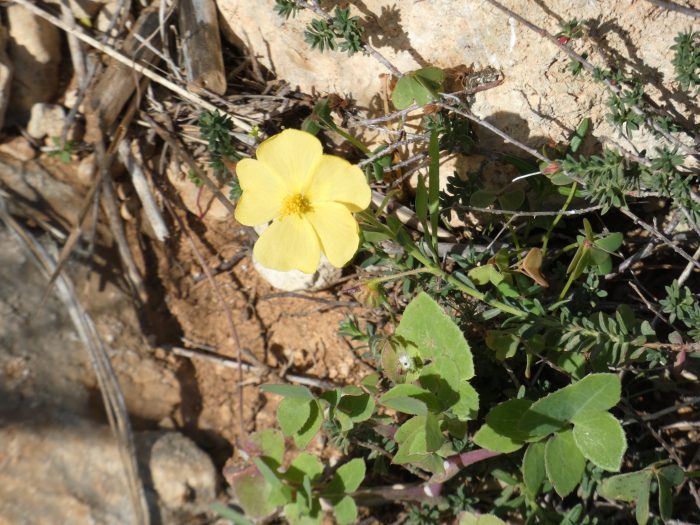
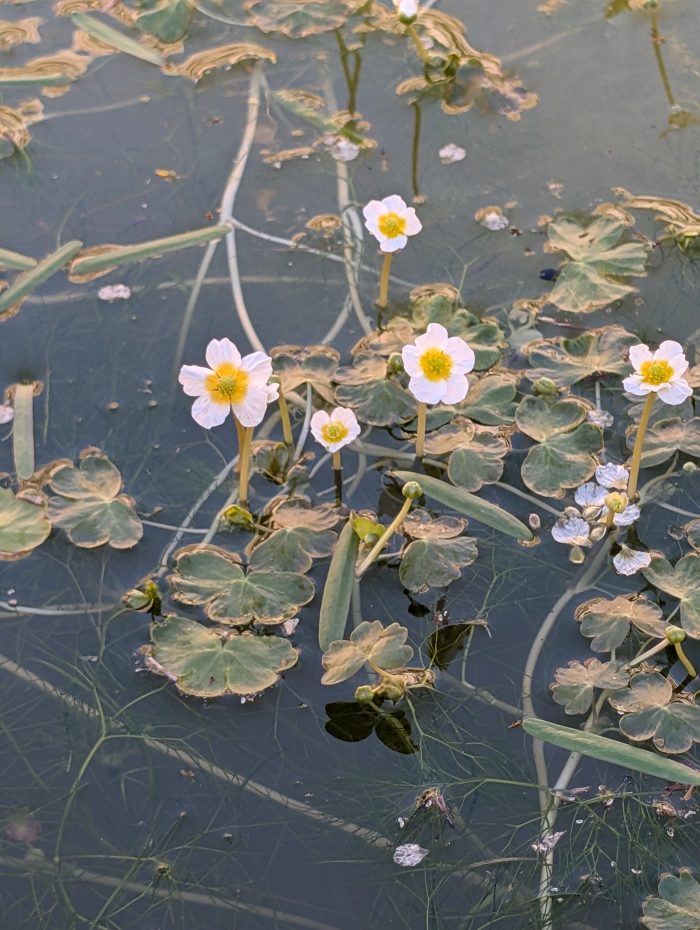
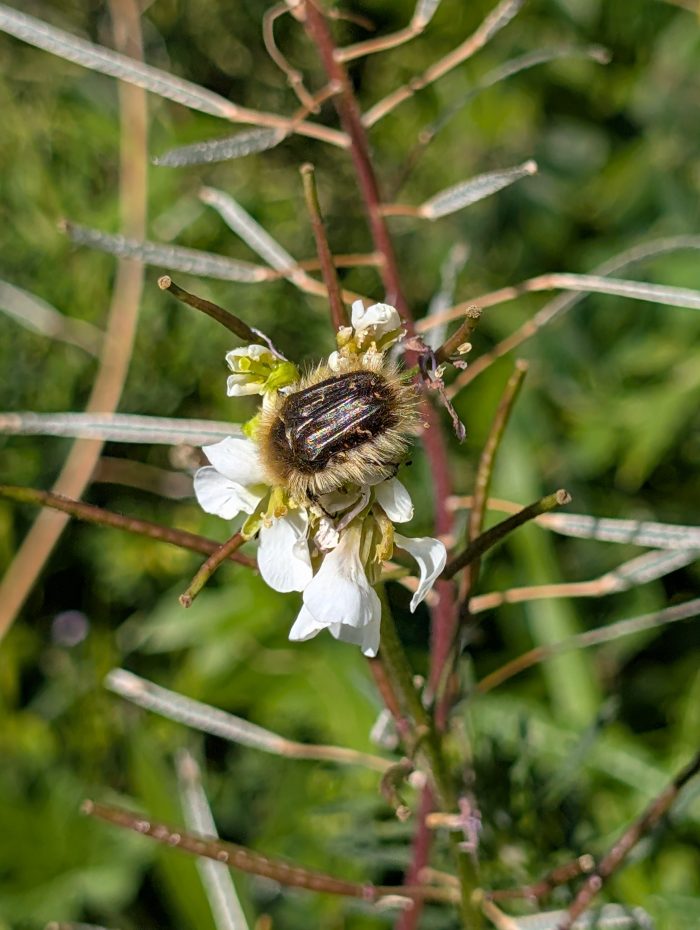
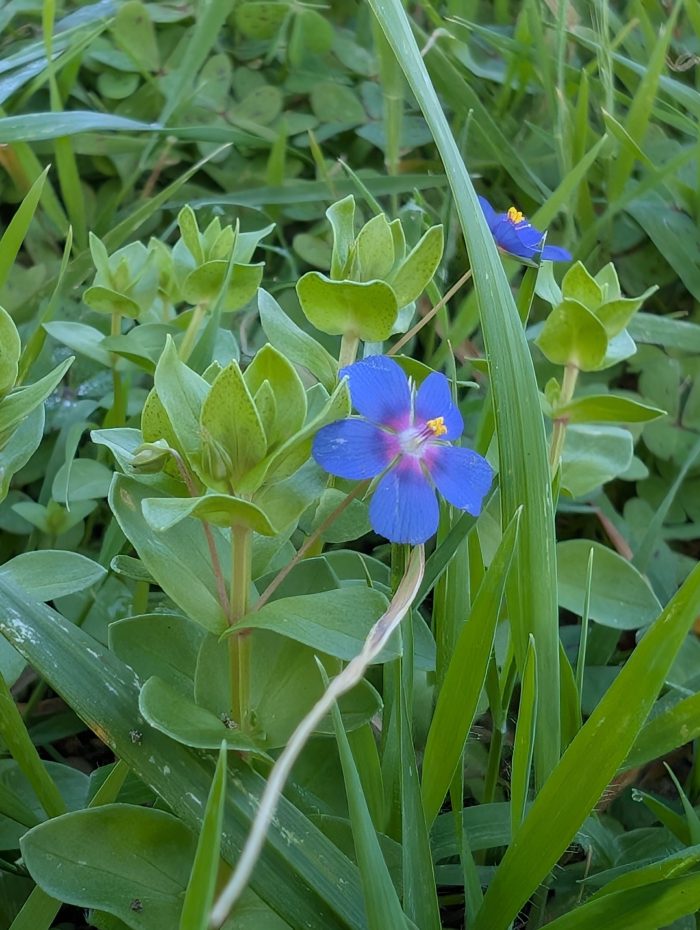
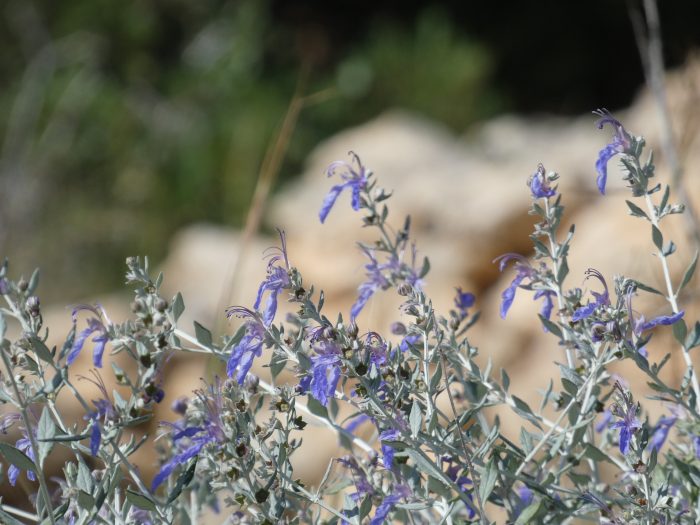
Works
This month, pathways in Foresta 2000 were trimmed to clear overgrown Lentisk shrubs, ensuring improved visitor safety and accessibility. Regular clean-ups and monitoring were also carried out to maintain the reserve’s condition, keeping the environment welcoming and safe for all visitors.

A fancy winter guest with a taste for wetlands
The Water Pipit (Anthus spinoletta – Diżż tal-Ilma) is a small passerine in the family Motacillidae, which includes pipits and wagtails. In breeding plumage, the Water Pipit has a greyish head, pale underparts with a pinkish wash, and a less streaked appearance. In the Maltese Islands, it is more likely to be spotted in its non-breeding plumage, which is much duller, with brownish tones and more streaks on the underparts. Its legs are a feature to look out, since their dark brown to black colour help to distinguish this species from the rather similar, but much more common Meadow Pipit (Anthus pratensis – Pespus), the latter having much paler legs.
The Water Pipit breeds in mountainous regions in Europe and Asia, including the Alps, Carpathians, and Pyrenees. During winter, it migrates to lower altitudes, coastal marshes, and wetlands in southern Europe, North Africa, and parts of the Middle East. In our archipelago, the Water Pipit is considered as a rather scarce species, mostly seen during the winter months. Being closely associated with water, wetland habitats such as Għadira Nature Reserve, tend to be the best places where to spot this species.
It mainly feeds on insects, small invertebrates, and seeds. It is often seen walking on the ground, sometimes even wading in shallow water, bobbing its tail while searching for food. The Water Pipit has a soft, high-pitched call and a melodious song often delivered in flight, but we practically never hear its song whilst in our archipelago. It builds its nest on the ground, usually well hidden in grass or under rocks. The clutch contains between 4 to 6 eggs, which eggs are incubated for about 2 weeks. Both parents help in feeding the chicks.
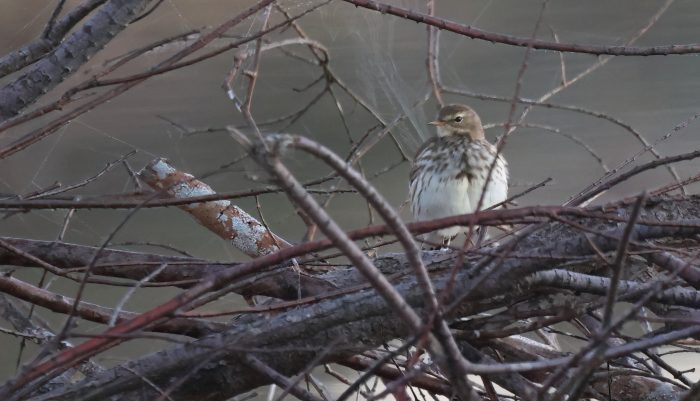
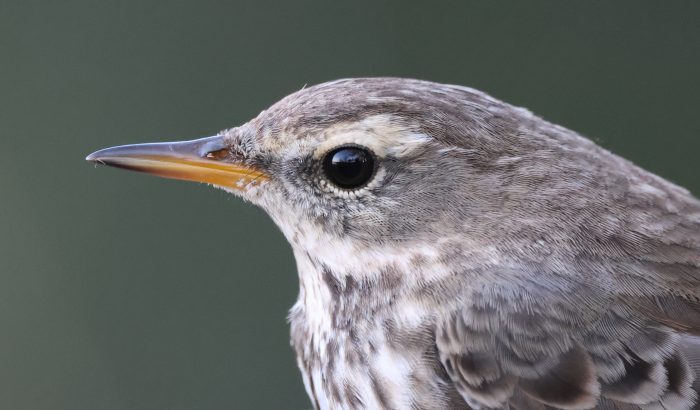
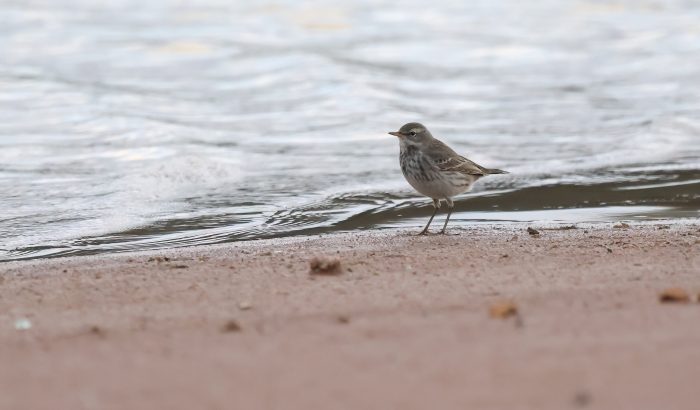
Credits
Words: Alessia Merson, Manuel Mallia, Vera Tokmakova, Charles Cloeiro, David Attard, Aron Tanti
Photographs: Aron Tanti, Vera Tokmakova, Charles Cloeiro, David Attard
Editing: Khouloud Belhadj

